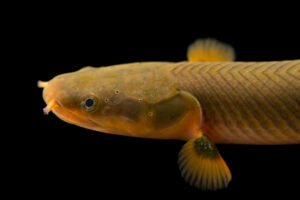Motoro Stingray: Comprehensive Care Guide, Facts, and Habitat

Freshwater stingray, Potamotrygon motoro, at Amazonia.
Discover the Fascinating Motoro Stingray: A Complete Care Guide and Essential Facts
Introduction
The Motoro Stingray (Potamotrygon motoro) is a unique and captivating freshwater species known for its distinctive spotted pattern and graceful swimming. Native to the river basins of South America, particularly the Amazon and Orinoco rivers, these stingrays are popular among advanced aquarists for their intriguing behavior and striking appearance. Understanding the natural habitat, dietary needs, and care requirements of the Motoro Stingray is crucial for providing optimal conditions in captivity and ensuring their well-being.
These stingrays are characterized by their round, flat bodies adorned with a beautiful pattern of spots. They are bottom dwellers and require a spacious tank with a fine, sandy substrate to prevent damage to their delicate undersides. Maintaining the right water parameters, such as a pH of 6.5-7.5 and a temperature of 75-82°F, is essential. Regular water changes and efficient filtration are crucial to keeping the water quality high. Feeding these stingrays a diet rich in protein helps keep them healthy and vibrant.

Facts
| Fact | Detail |
|---|---|
| Scientific Name | Potamotrygon motoro |
| Common Names | Motoro Stingray, Ocellate River Stingray |
| Year Discovered | 1841 |
| Kingdom | Animalia |
| Phylum | Chordata |
| Class | Chondrichthyes |
| Order | Myliobatiformes |
| Family | Potamotrygonidae |
| Genus | Potamotrygon |
| Species | P. motoro |
| Max Size | Up to 24 inches |
| Temperament | Generally Peaceful |
| Aquarium Level | Bottom Level |
| Difficulty | Advanced |
| Shoaling | Solitary or Small Groups |
| Best Kept As | Single specimens or Pairs |
| Diet and Feeding | Carnivorous |
| Reproduction | Livebearer |
| Average Lifespan | 10-15 years |
Appearance
The Motoro Stingray is easily recognizable by its round, flat body covered with distinctive spots that can range in color from yellow to orange on a dark background. Their graceful swimming and unique appearance make them a visually stunning addition to any large aquarium.

Distribution
Motoro Stingrays are native to the freshwater river basins of South America, including the Amazon and Orinoco rivers. They inhabit slow-moving waters with sandy or muddy bottoms where they can forage for food and hide from predators.
Habits and Lifestyle
Motoro Stingrays are primarily bottom dwellers, spending most of their time on the substrate where they search for food. They are generally peaceful but require ample space to move and hide. These stingrays are known for their ability to sense electrical fields in the water, which helps them locate prey.
Care Guide
Tank Setup: A tank of at least 200 gallons is recommended, with a fine, sandy substrate to prevent damage to their undersides. Provide plenty of hiding spots such as rocks, driftwood, and large plants.
Water Parameters: Maintain a pH of 6.5-7.5 and a temperature of 75-82°F. Efficient filtration and regular water changes are crucial for maintaining high water quality.
Diet: Feed a diet rich in protein, including live or frozen foods like shrimp, earthworms, and small fish. They may also accept high-quality carnivore pellets.
Physical Characteristics
Motoro Stingrays can grow up to 24 inches in diameter. They have a round, flat body with a pattern of bright spots on a dark background, a long tail equipped with venomous spines, and a mouth located on the underside.
Diet and Nutrition
These stingrays are carnivorous and thrive on a diet of live or frozen foods such as shrimp, earthworms, and small fish. Offering a variety of protein-rich foods helps ensure they receive balanced nutrition.
Breeding and Business
Breeding Motoro Stingrays in captivity can be challenging but is possible with the right conditions. They are livebearers, meaning they give birth to live young rather than laying eggs.
Breeding Techniques: To breed Motoro Stingrays, set up a large breeding tank with plenty of hiding spots. The water should be clean and stable with a temperature around 80°F. After a gestation period of several months, the female will give birth to live young.
Health and Diseases
Motoro Stingrays are generally hardy but can be susceptible to common freshwater diseases such as ich, bacterial infections, and parasites. Maintaining high water quality and a proper diet can help prevent these issues. Regular health checks and quarantine of new fish can also mitigate disease risks.
Common Diseases:
- Ich: Symptoms include white spots on the body and fins. Treat with elevated water temperatures and ich-specific medication.
- Bacterial Infections: Look for redness, ulcers, or fin rot. Antibiotic treatments in a quarantine tank are usually effective.
- Parasites: Symptoms include scratching against objects and rapid breathing. Anti-parasitic medications can help.
Commercial Medicines: Some commonly used medications for treating diseases in Motoro Stingrays include:
- Ich Treatment: Malachite Green, Formalin
- Bacterial Infections: Maracyn, Kanamycin
- Parasites: Praziquantel, Metronidazole
Behavior
Motoro Stingrays are generally peaceful but require a large, well-maintained tank to thrive. They are bottom dwellers and exhibit interesting behaviors such as burying themselves in the substrate and using their sensory organs to detect prey.
FAQs
| Question | Answer |
|---|---|
| How big do Motoro Stingrays get? | They can grow up to 24 inches in diameter. |
| What do they eat? | Their diet should consist of protein-rich foods such as shrimp, earthworms, and small fish. |
| Can they live with other fish? | They can be kept with other peaceful, large fish but require ample space to avoid stress. |
| How do you breed Motoro Stingrays? | Breeding is challenging and requires a large breeding tank with optimal water conditions. They are livebearers and give birth to live young. |
| What is the ideal tank setup? | A large tank with a fine, sandy substrate, plenty of hiding spots, a pH of 6.5-7.5, and a temperature of 75-82°F. |

Related Fish or Tank Mates
Suitable tank mates include other large, peaceful fish such as certain catfish and large cichlids. Avoid keeping them with aggressive fish that may cause stress or injury.
Price Table
| Region | Price (USD) | Date |
|---|---|---|
| North America | $150-$300 | June 2024 |
| Europe | €130-€250 | June 2024 |
| Asia | $100-$200 | June 2024 |
| Australia | AUD 200-400 | June 2024 |
Factors Affecting Price
- Rarity and demand
- Size and age of the fish
- Breeding and rearing conditions
- Transportation and import costs
References

Categories: Stingrays, Freshwater Fish, Tropical Fish, Aquarium Fish, South American Fish, Bottom Dwellers
Views: 14








